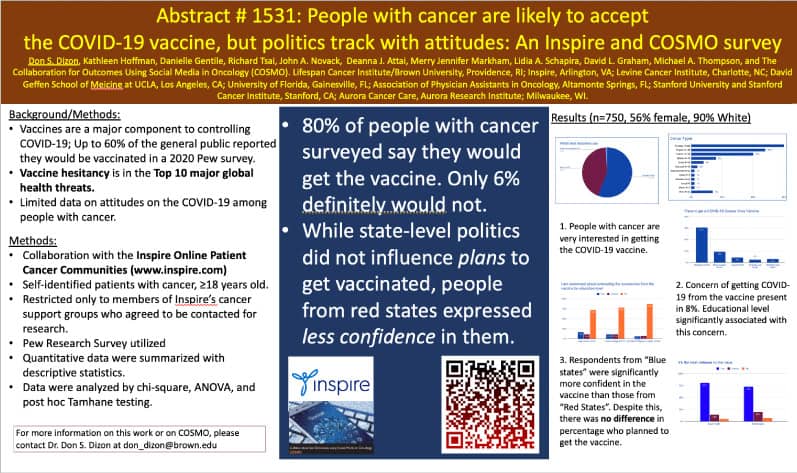Genetic and Cellular Studies Carve New Pathways to Treating Ovarian Cancer

By Kathleen Hoffman, PhD, MSPH
Ovarian, fallopian tube cancer and primary peritoneal cancer are often grouped under the name epithelial ovarian cancer. When classified as subcategories of ovarian cancer, primary peritoneal cancers and fallopian tube cancers are considered rare. The incidence rate of primary peritoneal cancer is estimated to be 6.78 per million.1 Fallopian tube cancers have been thought to be “very rare,” accounting for 1-2% of all gynecologic cancers.2
Because these cancers are usually advanced by the time they are diagnosed, it has been difficult to determine where they arise. But determining cells of origin may be key to better treatments. Recent research has changed our understanding of the etiology of ovarian cancer, opening the door to new opportunities for earlier detection and treatment.
Histological findings
Organization through histological examination has identified two types of epithelial ovarian cancers, low grade or Type I and high grade Type II, the most common form. Characteristics of these types can be seen in the table.3

Genetic research findings
Now, genetic research has unlocked some of the mysteries of this group of cancers. For example, it has been found that Type II high grade serous ovarian cancers or HGSOC have the TP53 mutation. Fallopian tube cancers fall into the Type II HGSOC category with TP53, BRCA and PTEN mutations but lacking KRAS, BRAF or ERBB2 mutations.3,4 Further, studies in mouse models and in organoids derived from ovarian epithelium and fallopian tube epithelium mimic the traits of the Type I and Type II groupings respectively, especially in their responses to first-line treatments with fallopian tube cell lines responding to carboplatin and paclitaxel.5
Using CRISPR technology to create, in ovarian epithelial cells, the TP53, BRCA and PTEN mutations common in fallopian tube cancers did obtain Type II characteristics in ovarian epithelium. In vitro drug testing on these cancerous cells compared to fallopian tube- derived cancer found distinct differences in responses of treatments.6 So although evidence is strong for fallopian tube cells as the originators of high grade Type 2 cancers, there is evidence that some may arise in ovarian cell epithelium with the same biomarker mutations but differential responses to treatment.
The burden of disease
Ovarian cancer ranks fifth in cancer deaths among women, but it accounts for more deaths than any other cancer of the female reproductive system.7 Very few of these cancers are caught in the early stages. Most are found at advanced stages and have a 5-year survival rate of less than 30%. If caught at an early stage, the 5 -year survival rate is around 92%.
Inspire’s community partner, the Ovarian Cancer Research Alliance (OCRA), estimates that for all types of ovarian cancer taken together, 72.4% of women with ovarian cancer live for at least 1 year after diagnosis, and almost half (46.2%) are still alive at least 5 years after diagnosis. Women diagnosed when they are younger than 65 do better than older women, so progress toward earlier detection is key for all women.8
The importance of genetic testing
Research presented June 4 at the American Society of Clinical Oncology—ASCO 2021 found that only about 45% percent of patients diagnosed with these cancers are being referred for genetic counseling and only around 40% percent receive that counseling.9 But genetic testing is proving to be highly valuable for treatment.10 For example, PARP inhibitors are a new class of treatment especially helpful for those with BRCA mutations. (See footnotes for several presentations at ASCO 2021)11,12,13
One new compound, PC14586, has been fast tracked by the FDA to reactivate the p53 gene which is turned off because of mutations. In animal models at maximum dose, this treatment has obtained complete remission. The treatment is in Phase I/II clinical trials.14 There are several companies that are exclusively focused on finding ways to reactivate p53.15 Knowing if one’s cancer carries this mutation is crucial to participation in clinical trials.
As one member of the OCRA Ovarian cancer support community on Inspire noted,
Since every situation is very individual in the sense of genetics and immune markers I would suggest to ask for a kind of second opinion.
Inspire’s audience size for each of the three cancers reflects their relative incidence rate, with ovarian cancer being the largest at 104,669, with over 700,000 posts. Among this audience, those with primary peritoneal cancer and fallopian tube cancer are smaller (2,089 and 1,230, respectively) but reflect a concentrated gathering of people with “rare” cancers. Rare disease sufferers often compare notes on treatment and describe in detail the associated emotional and physical challenges associated with their diagnosis:
I was diagnosed with stage 3 PPC over ten years ago. I had [treatment] (intraperitoneal) combined with [treatment] and haven’t recurred since. IP is not for everyone, but it worked for me. PPC is pretty rare but there are a fair number of us here, many with good outcomes since it’s more common in those with a mutation and a mutation can mean a better response to platinum-based chemo.
My mum [age] was diagnosed in January with a rare type of ovarian cancer called Primary Peritoneal Cancer (PPC) stage 3….She’s going to brave the shave at the end of the week, I’m so so proud of her, her hair is long and dark so it’s going to be extremely difficult adjusting to no hair. Although, she is going for a big chop tomorrow into a shorter style so it’s not as daunting when it comes to full hair removal.
Has anyone had experience with the newly approved fda drug [name]. My doctor suggested using it since my Fallopian tube cancer came back after three years dormancy.
Whether a condition is shared by very few people, or is a more commonly treated condition, members find their community on Inspire. As genetic research, testing, and clearer identification of the cellular origins of what is now referred to as epithelial ovarian cancer progress, “rare classifications” may change. And with this research is good news — the development of new treatments for these cancers.
Today’s case study discusses the unfamiliarity that patients and caregivers face with genetic testing for biomarkers and how a research collaboration with Inspire helped our partner, the American Lung Association, provide needed help to patients and caregivers. Download our case study.
Inspire offers a trusted community to patients and caregivers. Our goal with this blog, this website and our content is to provide the life science industry access to the true, authentic patient voice. In so doing, we support faithful operationalization of patient-centricity. Take a look at our case studies, eBooks and news outlet coverage.
References:
1https://www.ncbi.nlm.nih.gov/books/NBK562138/
2https://rarediseases.org/gard-rare-disease/fallopian-tube-cancer/
3Vang, R., Shih, I., & Kurman, R. J. (2009). Ovarian low-grade and high-grade serous carcinoma: pathogenesis, clinicopathologic and molecular biologic features, and diagnostic problems. Advances in anatomic pathology, 16(5), 267–282. https://doi.org/10.1097/PAP.0b013e3181b4fffa
4Labidi-Galy, S., Papp, E., Hallberg, D. et al. High grade serous ovarian carcinomas originate in the fallopian tube. Nat Commun 8, 1093 (2017). https://doi.org/10.1038/s41467-017-00962-1
5 Zhang, S., Dolgalev, I., Zhang, T. et al. Both fallopian tube and ovarian surface epithelium are cells-of-origin for high-grade serous ovarian carcinoma. Nat Commun 10, 5367 (2019). https://doi.org/10.1038/s41467-019-13116-2
6Lõhmussaar, K., Kopper, O., Korving, J. et al. Assessing the origin of high-grade serous ovarian cancer using CRISPR-modification of mouse organoids. Nat Commun 11, 2660 (2020). https://doi.org/10.1038/s41467-020-16432-0
7https://www.cancer.org/cancer/ovarian-cancer/about/key-statistics.htm
8https://ocrahope.org/patients/about-ovarian-cancer/staging/
9https://meetinglibrary.asco.org/record/195561/abstract
10https://www.medicalnewstoday.com/articles/parp-inhibitor
11https://meetinglibrary.asco.org/browse-meetings/2021%20ASCO%20Annual%20Meeting/5545
12https://meetinglibrary.asco.org/browse-meetings/2021%20ASCO%20Annual%20Meeting/5515
13https://meetinglibrary.asco.org/browse-meetings/2021%20ASCO%20Annual%20Meeting/5514
14https://ecancer.org/en/video/9683-pc14586-the-first-orally-bioavailable-small-molecule-reactivator-of-y220c-mutant-p53-in-clinical-development
15https://www.ventureradar.com/keyword/p53








